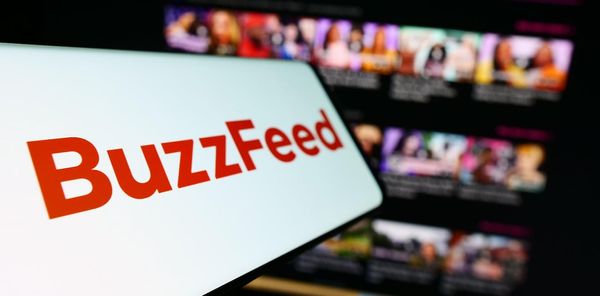BuzzFeed Inc., befitting a media company bred for virality, always meant many things to many people: listicles, charticles, investigations, quizzes and “15 Poop Horror Stories That Will Make You Feel Better About Yourself.” It was a fire hose of award-winning news and digital pablum.
And on April 20, BuzzFeed leaders excised its award-winning news.
In its prime, BuzzFeed News had formidable reporters across the board, its efforts culminating in a 2021 Pulitzer Prize for its reporting on China’s detention of Muslims in Xinjiang province. The publication’s demise has prompted sneering aplenty. But for all of BuzzFeed’s missteps under Chief Executive Officer Jonah Peretti—it burned through hundreds of millions of dollars—it was a trailblazer. When social media replaced physical newsstands as the main distributors of news, BuzzFeed’s distinctive headline-writing and its videos’ visual language pioneered ways to lure an audience.
For a brief, heady moment, plenty imagined that BuzzFeed would be to news media what Netflix was to film and television: a disruptive business model plotting a path for others. In reality, it was more like Blockbuster Video.
Netflix attracts subscribers with a few big-ticket productions, then hopes they stick around for the lower-quality fare that plumps up its catalog. Blockbuster made money only when someone decided to rent a given DVD or VHS. BuzzFeed is similar: Each story, video and listicle has to find its own audience in the competitive social media market to make money from ads. It relies on social media for traffic and advertising for revenue. Should the whims of either change—and they did—then the company feels the pain.
The likes of New York Times Co. have recognized that social media is the top of a funnel that ultimately results in someone paying for a subscription. Times Co. now makes 67% of revenue from subs and just 23% from ads. BuzzFeed still depends on ads for half its sales, and subscriptions would be a harder sell given the nature of its output.
BuzzFeed’s decline doesn’t, however, represent the triumph of news subscriptions, because subscribers are getting harder to find. Social media platforms now have little interest in sending traffic to a website that isn’t paying for an ad. Facebook used to make it pretty easy to click on articles, even those produced by a Moldovan content farm. On TikTok, you’re not clicking on anything much at all, just swiping up to the next video. And Elon Musk seems intent on scorning news organizations on Twitter.
Some 39% of 18- to 24-year-olds declared social media their main news source last year, versus 34% who went to news websites or apps, according to the Reuters Institute for the Study of Journalism. BuzzFeed won’t abandon news entirely—it still owns HuffPost, the news aggregator it acquired in 2020, which depends less on social traffic. But the death of its news arm shows that finding a monetizable audience on social media is only becoming harder.Read next: TikTok’s Algorithm Keeps Pushing Suicide to Vulnerable Kids
©2023 Bloomberg L.P.










